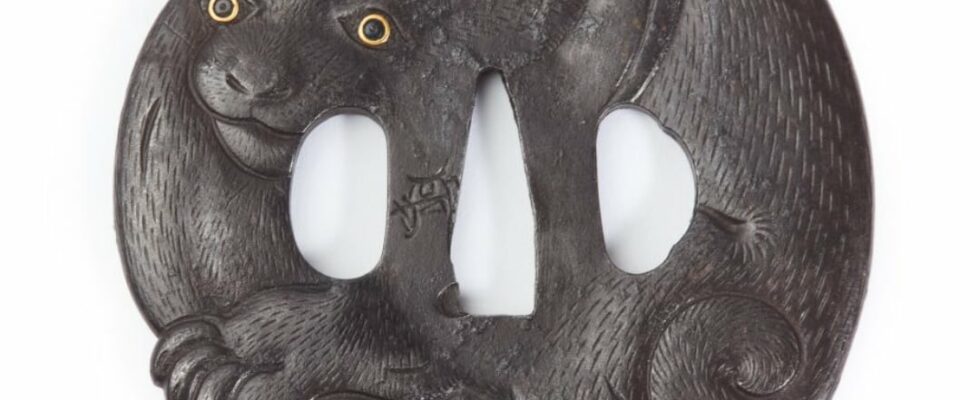Asian art is often talked about because of the millions of euros that Chinese vases, bronzes and jades can fetch at auction, which are fought over by wealthy collectors from the Middle Kingdom.
This surge in prices does not concern Japanese arts. One can even acquire precious objects of rare refinement for much more modest amounts. This is the case of three pieces composing the costume of the samurai and daimyos, members of the military aristocracy of feudal Japan.
Among the prized items are inros, small boxes attached to the belt of kimonos by a cord, and netsukes, ivory or wooden objects used to hold the inros. But the emblematic objects of Japanese warriors are tsubas. These are sword guards whose function is to protect the hand and prevent it from slipping from the handle onto the edge of the blade. The first ones date back to the 6th century. The most elaborate ones date from the Edo period (1603-1868).
These objects, measuring 5 to 10 centimetres, were often made of iron and copper, but also of bronze, silver or gold. Their shape was very varied: round, quatrefoil, square, rectangular, etc. There are many styles and several schools and manufacturing techniques. These sabre guards are small masterpieces of decorative composition. They can depict real or mythical animals, flowers, landscapes, etc.
From 300 euros
Although sought after by passionate collectors, these objects remain at affordable prices and remain safe from speculation. The budget to devote starts at 300 euros for simple pieces and exceeds 3,000 euros for the most refined ones from the Edo period with original representations. They can be found at specialized antique dealers and in Asian art sales, but it is rare to have a sale entirely devoted to tsubas.
Hence the interest in the sale organized by Tessier & Sarrou on September 20 at the Hôtel Drouot, which will be selling 220 tsubas from Patrick Liebermann’s collection. This exceptional collection favors late schools that used noble materials such as shakudo (gold alloy) or shibuichi (silver alloy). It is a unique opportunity to take an interest in this mode of artistic expression from ancient Japan and, why not, to start a collection.
